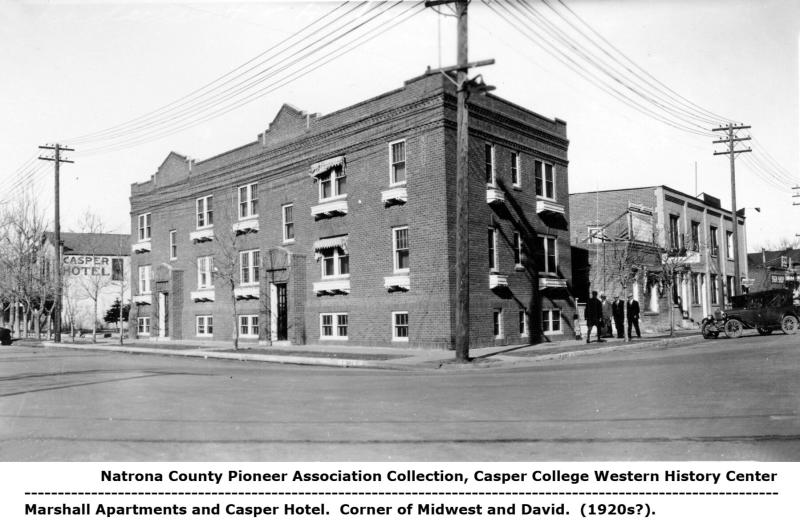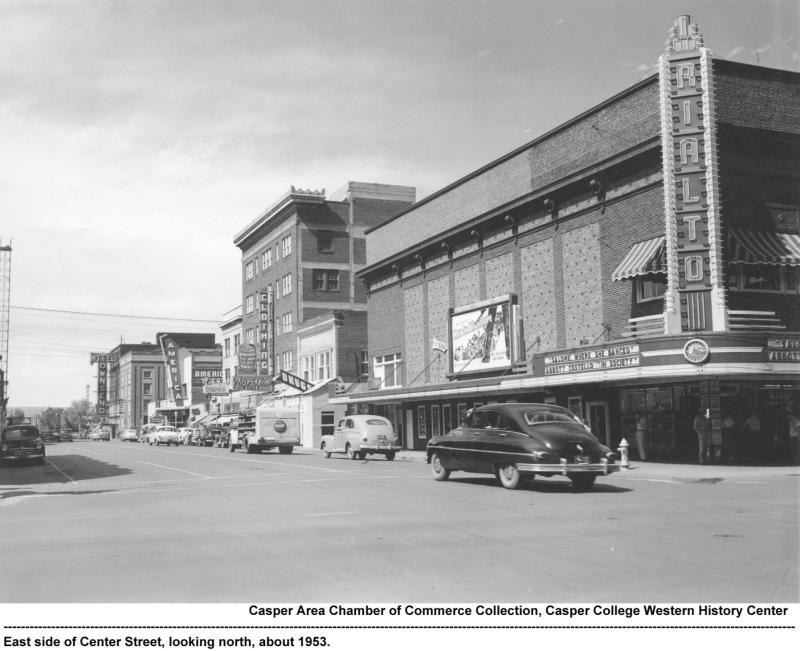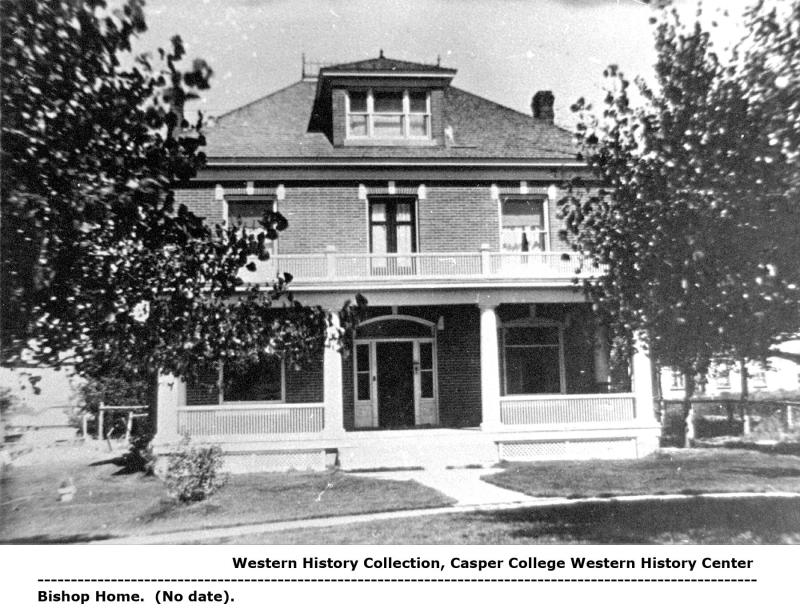In June of 1888, 14 months before Wyoming became an official state, the town of Casper was established at the intersection of McKinley and A Streets. Many of the buildings you see downtown today were built in the early 1900s-1920s. From drug stores, saloons, blacksmith shops, prohibition era bootleggers, sheep wagon cover makers and the Natrona County Library (which hasn’t moved since being built in 1906) our city has seen it all. Here are some of the best stories about some of our oldest buildings.
1: 323 S. David Street
This property used to be home to one of the biggest bootleggers in the country between 1912 and 1918. The owner was known to be a legendary sly bootlegger back in the day; to hide his tire tracks leading to his hidden still, he would leave a trail of corn for his sheep to eat. The sheep’s hooves would erase the tracks and keep revenuers from finding his still.

2: 133 S. Center Street
Between 1901 and 1918 the original building, which has since been reconstructed, occupied the Women’s Christian Temperance Union. The group is best known for opening the very first library in Casper, but also known for pouring all the liquor in town into the North Platte river during the prohibition era. The new building, which is now local furniture store Sierra West, used to be a Harry Yesness Store. Harry Yesness was a comedian that came to Casper to perform a comedy show at the Elks’ Club. Before his show, Harry needed a suit pressing. After realizing the business’s potential due to the cost being an absurd three dollars, he sold all of his belongings and purchased the store himself.
3: 102 E. 2nd Street
Just about the only thing that has changed at the Rialto Theatre is the price of admission. When it opened in 1921, admission for adults was 40 cents, and only a dime for children. The Rialto’s elegant interior made it the go-to theatre for first run films. In 1928, it became the first Casper theatre to feature a Vitaphone sound system, marking the end to the silent film era here in town. In 1993, the Rialto was added to the National Register of Historic Places.

4: 818 E. 2nd Street
Located in the South Wolcott Historic District, you will find the Marvin L. Bishop home. This was the first multi-story brick home in Casper and housed Mr. Bishop, who was appointed Casper’s Postmaster in 1892. After he resigned, Mr. Bishop became a prominent sheep rancher, and founded the Natrona County Woolgrowers Association. In 2001, the Bishop Home was listed on the National Register of Historic Places. The home is available to rent for small group meetings, private parties and more. For more information, visit CadomaFoundation.org
5: 256 S. Center Street
In 1918, this building was known as Middleton’s Pool Hall. But in 1941, the building’s most notable occupant moved in, The Wonder Bar. Frequently visited by celebrities such as Ernest Hemingway, Ty Cobb, Rex Allen, and Ken Curtis, the Wonder Bar was known to have some amazing stories. In 1954, baseball star Dizzy Dean was spotted having a drink at the bar. Once the town got word that the famous St. Louis Cardinal pitcher was in town, children began gathering at the door. Dizzy then gave a waitress $20 to buy as many baseballs as she could and to bring them back so that he could sign them and hand them out to his adoring crowd.
Our town has a lot of history that can be uncovered by simply walking around downtown. You can still see some of the old signs for the businesses that used to occupy our vintage buildings. The architecture itself is a site to see, but the stories that surround our city are worth listening to. Stop into our office at 139 W 2nd Street or the visitor center at the National Historic Trails Interpretive Center and pick up a self-guided walking tour to experience all of the stories above and more for yourself.




